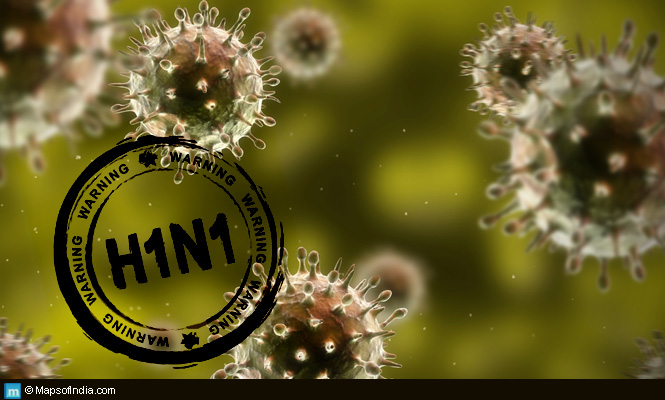 Recent news reports have brought to light the fact that a Member of Parliament from a southern constituency has tested positive for swine flu. Just before the onset of the illness, she had visited her constituency to work on, among other activities, Swachh Bharat Abhiyan. This brings to the fore, in startling clarity, the need for cleanliness to curb the spread of communicable disease, which I had touched upon in my earlier article.
Recent news reports have brought to light the fact that a Member of Parliament from a southern constituency has tested positive for swine flu. Just before the onset of the illness, she had visited her constituency to work on, among other activities, Swachh Bharat Abhiyan. This brings to the fore, in startling clarity, the need for cleanliness to curb the spread of communicable disease, which I had touched upon in my earlier article.
Be that as it may, the global phenomenon, swine flu – also called H1N1 infection – has now made its presence felt in India. With both Delhi and Chandigarh reporting new incidence of swine flu, and even deaths, here’s a lowdown on what you need to know about the disease, its treatment and prevention.
After the 2009 swine flu pandemic – the type of infection that spreads to large populations across the world – it was hoped that the disease would be contained. However, Influenza Type A virus, which causes the infection is still around, and has led to the latest outbreak of the disease in India.
Who all are vulnerable to swine flu infection
Initially, the virus entered the human body through our interactions with animals, most notably pigs – hence the name, swine flu – and birds. H1N1 refers to the strain of the virus that causes infection, and a new strain called H3N2v has also been detected in outbreaks in 2011. Recently most of the swine flu epidemics have been due to human to human interactions: the droplets from the nasal passages of an infected person lead to the disease when inhaled by another person.
Swine flu symptoms include fever, body ache, loss of appetite, fatigue, runny or blocked nose and sore throat. Usually these symptoms are self-limiting and the mortality rate from the disease is very low. However, as with many other conditions, the extremes of age groups, that is, children and elderly, as well as those with pre-existing medical problems such as liver, heart or kidney problems, pregnant women, and those with a low immune status are particularly vulnerable to severe manifestations of the disease.
Thing that you could do to treat and prevent swine flu:
- If you develop the illness, take rest indoors. Paracetamol or ibuprofen tablets help relieve the symptoms of the illness; especially fever and body ache. Take plenty of fluids to offset the effect of the circulating toxins in the body.
- If you happen to belong to the vulnerable age groups, or develop severe symptoms, it is always best to visit your physician who may be able to arrange for further tests, and if necessary, treat you with antiviral antibiotics.
- If you do not have the illness, it is best to keep away from infected zones and individuals. If you happen to have the illness, it is advisable to stay away from work and other social gatherings for at least 24 hours till after the fever stops, so that you do not pass on the infection to others.
- Make sure that your personal hygiene is maintained. Hand rubbing or washing with disinfectants and soap is a simple way of ensuring that contamination from fomites – things such as taps, pens, doorknobs and keyboards that can harbour viruses – does not happen. Remember that the virus remains active for at least 48 hours on the surface of fomites.
- If you are in the vulnerable groups of population, it may be a good idea to vaccinate yourself with the flu vaccine annually.
- Spread awareness about the illness. Make sure that those with the infection are not ostracized or ill-treated; the aim is to aid their recovery while ensuring that the infection does not spread. Remember that it could well have been you in their position.
Related Information:
What is Anthrax ? : Symptoms, Treatment, Prevention Measures
Rotavirus Vaccine Launched in India
Is India Prepared for Zika Virus: Guidelines, Symptoms, Diagnosis & Treatment
Is India Close To Developing The Zika Virus Vaccine?
Genital Tuberculosis: Causes, Symptoms and Remedy
Communicable Diseases Prevention measures
Japanese Encephalitis in India – Guidelines for Prevention, Control & Symptoms
Hepatitis B in India: Guidelines for Prevention, Symptoms, Causes, Risks & Treatment
Swine Flu Continues to Ravage India
Ebola Virus Outbreak – Is India Prepared?
India To Be Certified As A Polio-free Nation By WHO
Non-Communicable Diseases – Take Care, Before It’s Late
Prevention of Heart Attack and Other Related Heart Diseases
Leprosy – Causes, preventions and eradication programme
Prevalence of Diabetes in India
Can Delhi Handle an Ebola Outbreak
The Fever : Vaccination Still An Elusive Proposal
A Reality Check on State of Mental Health in India
Sharp rise in non polio Acute Flaccid Paralysis after polio-free status
Growing Problem of Asthma in India



